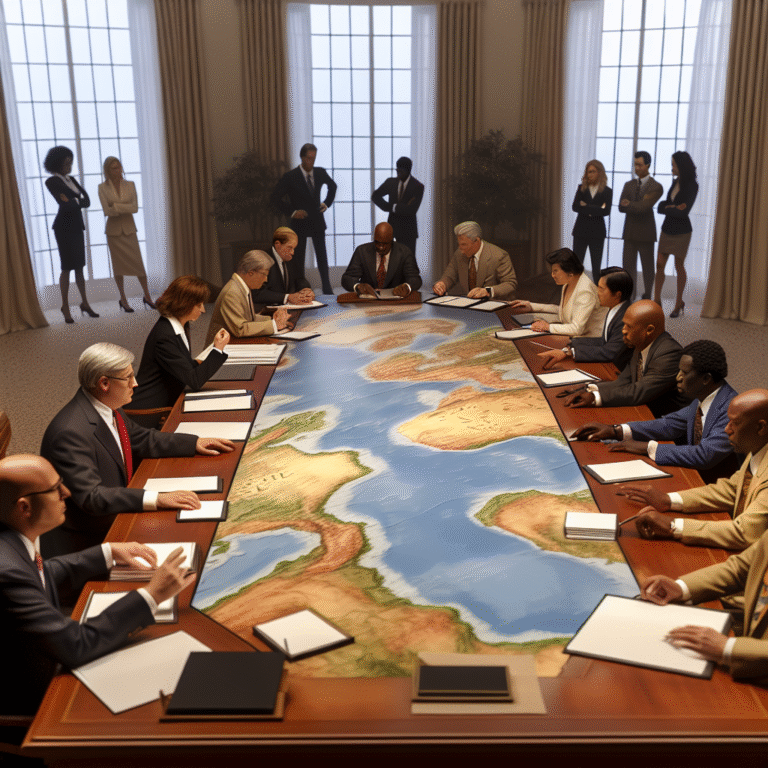Foreign Investment Sparks Tensions in Greenland
As summer unfolds in Greenland, the issue of foreign investment has ignited passionate debates among locals, particularly regarding the role of Danish travel agencies Topas and Albatros. The palpable sense of local patriotism has been felt, especially in coastal towns like Ilulissat, where the atmosphere has grown so charged that Naaja H. Nathanielsen from the Naalakkersuisut found himself compelled to address allegations of “threats and bad behaviour.”
Among politicians, discussions surrounding foreign capital, particularly in the realms of tourism, fishing, and resource extraction, can become equally fraught. “This is a critical discussion,” asserts Torben M. Andersen, chairman of the Greenland Economic Council. “Pursuing a more sustainable economy isn’t just about amplifying activities but ensuring they benefit the people of Greenland.”
Recently, the Inatsisartut has put forth comprehensive regulations governing tourism, fishing, and resource extraction. These laws impose rigorous requirements concerning national registration, tax obligations, and ensuring a lasting connection to Greenlandic society. Opinions among residents are divided: while some view these regulations as necessary safeguards against foreign exploitation, others argue they stifle foreign investment, risking a fire sale of Greenland’s natural wealth. In its latest half-yearly report, Greenland’s Economic Council navigates this contentious landscape, particularly with respect to the mineral sector.
“It’s unrealistic to expect significant resource activities without foreign partners bringing in not only capital but also knowledge and expertise,” states Andersen.
A Legacy of Resource Riches
It has been nearly five decades since the French drilling vessel “Pelican” first ventured off Greenland’s shores in search of hydrocarbons. Today, however, little has changed—the country remains largely untapped, with only one operational mine: Lumina Sustainable Materials A/S, which extracts the industrial mineral anorthosite near Kangerlussuaq Airport.
The issue is stark—financing. Although the Naalakkersuisut has granted a number of licenses for large-scale mineral projects, securing the necessary funding has proven elusive. This seems puzzling given the increasing global attention toward Greenland’s underground resources, particularly critical minerals that could drive the green transition. Yet the rugged terrain and political uncertainties continue to test even the most determined investors.
Economic Impact: Gains and Losses
The conversation around business investments often highlights the need for local financing as a counterbalance to foreign dollars. Institutions like the Bank of Greenland and Nalik Ventures strive to provide support, but they lack the backing to significantly impact large mining endeavors. While Greenlandic pension funds, like Sisa, are named in discussions, their focus often skews towards safer investments in foreign markets rather than the high-risk, high-reward ventures within Greenland.
The recent annual report from Sisa reveals a mixed bag—while some investments yielded substantial returns, others faced steep losses. Innovations in local industries may not yet have paid off as expected.
Greenland boasts a wealth of minerals sought after globally, but challenges persist. Low purity levels and difficult availability hinder progress. Presently, of the 96 permits issued for mineral exploration, only a single mine is operational. This disconnect points to a wider issue: foreign investors are hesitant to enter a market where risks are high and returns uncertain.
“The resource interest tax, commonly known as royalty, is essential to Greenland’s mineral economy,” Andersen emphasizes. “Yet we must not lose sight of the broader socio-economic gains, which arise when mining projects catalyze local businesses and generate employment.”
Structural Challenges Ahead
The primary barrier to realizing these socio-economic benefits remains the labor market. The timeline from exploration to actual mining can span years, even decades. This extended period allows for necessary reforms but also delays the revenue that mining operations could bring to Greenland’s economy.
“Greenland must address its structural labor market challenges to ensure that more residents can realistically take part in new mining jobs,” says Andersen. The Economic Council identifies three pressing issues: inadequate education levels, a dispersed population, and a lack of incentive for employment.
“But the conversation can sometimes oversimplify the impact of mining,” he continues. “The arrival of one mine won’t solve all existing problems. It’s crucial for the Naalakkersuisut and Inatsisartut to initiate needed reforms. Rather than fixating solely on foreign investment, we must cultivate a well-trained local workforce equipped for roles in the extraction industry.”
As Greenland navigates its path of balancing foreign investment and local empowerment, the stakes are high. The potential for economic growth is immense, yet so too are the responsibilities that come with it. Only time will tell how effectively Greenland can leverage its natural riches in a way that benefits its people.
